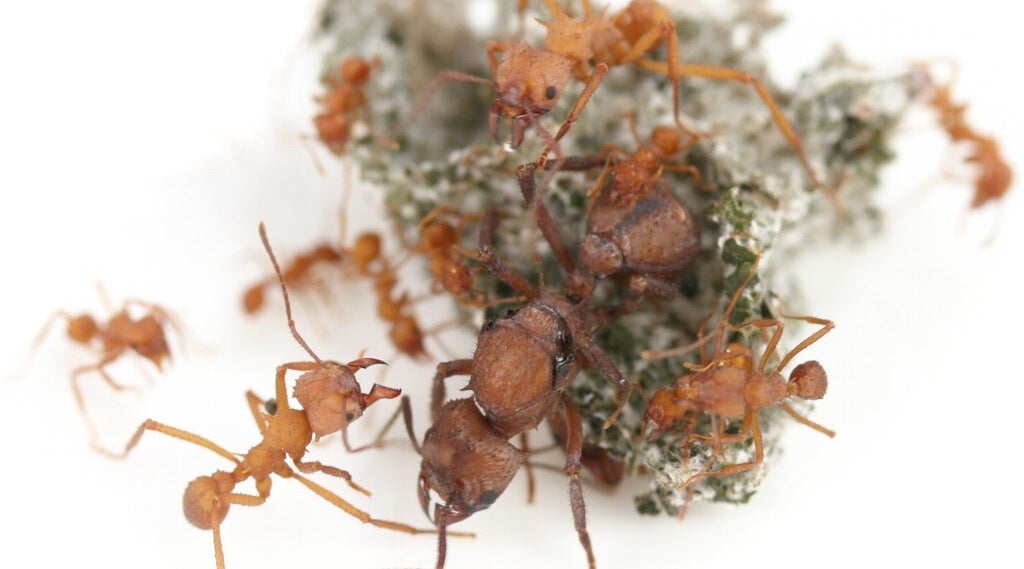
What's so great about leaf cutters?
Keeping leafcutter ants as pets can be very interesting and fun for some people for several reasons. Here are a few possible reasons why people enjoy keeping leafcutter ants:
- Fascinating Behavior: Leafcutter ants are highly social animals that live in colonies and display a high level of organization and communication. Observing their behavior and interactions can be fascinating.
- Intriguing Anatomy: Leafcutter ants have unique anatomical features that set them apart from other insects. For example, they have a distinctive head and jaws adapted for cutting and carrying leaves.
- Interaction with the environment: Keeping leafcutter ants can also be a way to learn more about the natural environment in which they live. For example, it can be interesting to see how they build their nests and how they interact with plants.
- Educational: For some people, keeping leafcutter ants can be an educational experience, especially for children interested in insects and natural history.
However, it is important to remember that keeping exotic animals as pets comes with responsibility. It is important to have sufficient knowledge of how to care for leafcutter ants before deciding to keep them as pets.
- What leafcutter ants eat and how does their fungus work
Leafcutter ants mainly feed on plant material, such as leaves and flowers. They cut off pieces of these materials and return them to their nests. There they use the pieces to grow a fungus on which they feed. This fungus is the main source of food for the ants.
The fungus grown by leafcutter ants is a special species used only by these ants and is sometimes referred to as the "leafcutter ant fungus". The ants collect the plant pieces and take them to their nest, where they are processed by other ants. These ants chew the pieces finely and add enzymes to speed up the breakdown of the plant cells. The crushed plant material is then transferred to the nest's "garden room", where it is used to feed the fungus.
The fungus grows on a special soil that the ants have made from saliva, feces and other materials. The ants provide the right conditions, such as temperature and humidity, to optimize the growth of the fungus. The fungus grows into a white mass that resembles a sponge and the ants feed on the fungus by biting off bits of it.
It is fascinating to see how leafcutter ants obtain their food in such a complex way and how they depend on the fungal culture they grow. It is important to note that keeping leafcutter ants as pets requires proper care and attention to ensure that their food requirements are met.
- At what temperature and humidity should you keep leafcutter ants?
Leafcutter ants are tropical insects that thrive in warm and humid conditions. To create a suitable environment for leafcutter ants, the temperature in their habitat should be between 22 and 28 degrees Celsius. Humidity should also be high, ideally between 70 and 90 percent.
There are several ways to maintain the temperature and humidity in the nest of leafcutter ants. A common method is to use a terrarium or special ant farm designed to provide the right conditions. These can often be purchased from specialty stores or online.
To control the temperature, a heat mat or a heat lamp can be used. However, these should be used with care to avoid overheating. To increase the humidity, a humidifier can be used or the bottom of the nest can be regularly moistened with a spray bottle.
It is important to check the temperature and humidity regularly to make sure they stay within the correct ranges. This is essential to ensure the health and well-being of the leafcutter ants and to allow their fungal culture to thrive.
- Where are leafcutter ants common?
Leafcutter ants are mainly found in the tropical and subtropical regions of Central and South America. They can be found in a variety of habitats, including rainforests, woodlands, savannas, and grasslands. Leafcutter ants are best known for their complex social structure and their ability to form large colonies that can consist of thousands of individuals.
There are several species of leafcutter ants, and some have a wider range than others. One of the most famous species is the Atta, which can be found from Mexico to Argentina. Other well-known species are the Acromyrmex, which can be found in Central and South America, and the Trachymyrmex, which can be found in North and South America.

